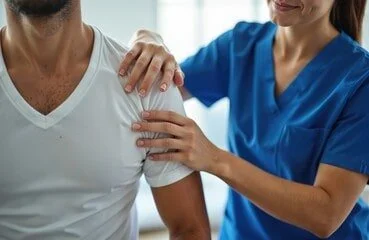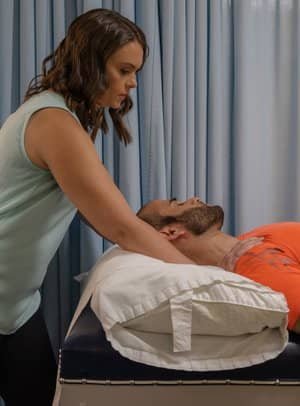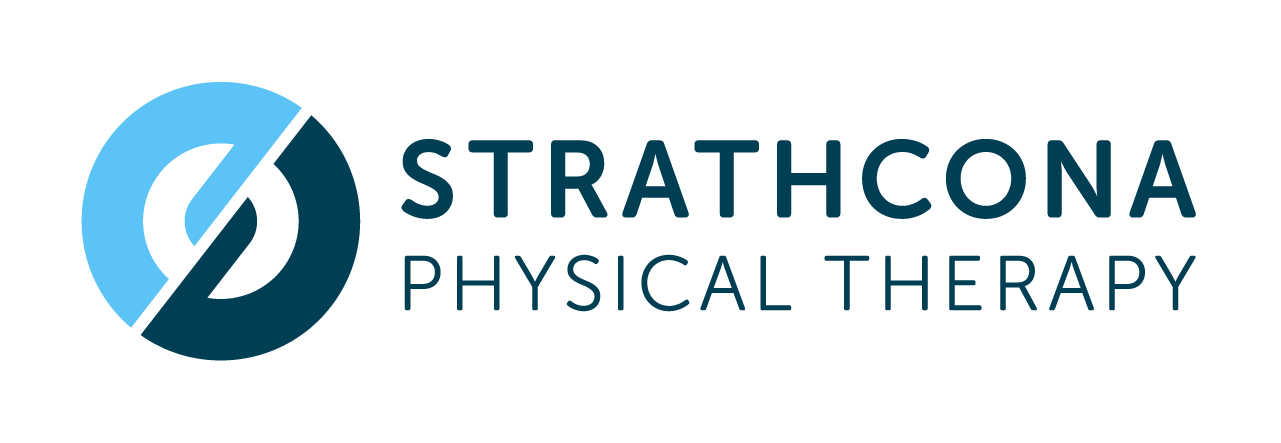
The Body Remembers: How Trauma Lives in Our Muscles, Joints, and Nervous System
Trauma leaves a lasting imprint not only on the mind but on the body, showing up as chronic tension, joint pain, posture changes, and nervous system imbalance. This blog explores how trauma is stored in muscles and movement patterns, and how integrative therapies like physiotherapy, somatics, and breathwork can support deep healing.

The Pelvis: The Hidden Key to Shaping and Supporting a Scoliotic Spine
The pelvis is more than a bystander in scoliosis—it’s the foundation that shapes how the spine curves, twists, and compensates. Explore how pelvic alignment influences scoliosis progression and why combining pelvic corrections with Schroth therapy leads to better whole-body balance and function.

Functional Leg Length Discrepancy: A Whole-Body Physiotherapy Approach
Functional leg length discrepancy is a common but often overlooked issue that can affect posture, movement, and joint health. Unlike structural discrepancies, it stems from muscular or postural imbalances. Learn how physiotherapy can help you correct these issues and get back to moving with ease and confidence.

Can Ergonomics Alone Relieve Back, Neck & Joint Pain? What the Evidence Actually Says
Adjusting your workspace helps, but it's not the cure. Research shows that treating back, neck, and joint pain requires more than just good ergonomics. Find out why movement, strength, and body awareness matter more.

Do I Need an X-Ray After an Ankle Injury?
Twisted your ankle and wondering if you need an X-ray? Learn how to tell the difference between a simple sprain and something more serious. We break down the signs to watch for, when imaging is needed, and how to manage recovery.

The Lats You Forgot You Had: Why Your Latissimus Dorsi Is the Unsung Hero of Movement
Often overlooked but critically important, the latissimus dorsi muscle powers your pulling strength, supports your spine, and connects your upper body to your core. Learn why your lats are essential for posture, performance, and pain prevention—plus discover three progressive exercises to activate them effectively.

Movement in the Acute Phase: Why Rest Isn’t Always Best
Total rest after an injury isn’t always the best strategy. New research shows that gentle, controlled movement during the first 72 hours can promote circulation, maintain mobility, and support faster healing. Learn how physiotherapists safely guide recovery from day one.

The Lateral Pterygoid Muscle: A Key Player in Jaw Health and TMD
The lateral pterygoid muscle plays a crucial role in jaw movement, disc stability, and TMJ health. Dysfunction can contribute to pain, clicking, and jaw locking. Discover how a comprehensive physiotherapy approach can address these issues and restore jaw balance.

Understanding Your Obliques: Function, Importance & How to Train Them
Your obliques do far more than twist your torso—they support your spine, aid in breathing, and keep your core stable. This blog explores how obliques function, how they can get strained from everyday actions like coughing, and the best exercises to train them properly for strength and injury prevention.

Can IMS with Electrical Stimulation Help with Carpal Tunnel Syndrome?
Carpal Tunnel Syndrome can cause pain, numbness, and weakness in the hand—affecting daily function and quality of life. This blog explores how IMS with electrical stimulation can reduce nerve irritation, restore muscle balance, and support faster recovery. Backed by research, this comprehensive treatment targets both symptoms and underlying causes.

The Pronator Quadratus: Small Muscle, Big Role in Wrist Stability
Often overlooked, the pronator quadratus is a small but powerful muscle that plays a key role in wrist stability and forearm rotation. Injuries to this deep muscle can lead to pain, weakness, and reduced function, especially after trauma or overuse. Learn how proper diagnosis and physiotherapy can support healing and restore mobility.

Schroth Therapy for Scoliosis: An evidenced-based Approach to Spinal Health
Scoliosis affects posture, movement, and overall function, but Schroth Therapy offers a targeted, evidence-based approach to managing spinal alignment and discomfort. At Strathcona Physical Therapy, we specialize in personalized Schroth-based physiotherapy to help patients improve posture, mobility, and quality of life. Learn how three-dimensional postural correction, rotational breathing, and muscular retraining can support scoliosis management. Start your journey to better spinal health today!

The Science Behind Shockwave Therapy: Does It Really Work?
Shockwave therapy (SWT) is widely used in physiotherapy for chronic musculoskeletal pain and tendon injuries, but does it work? This post breaks down the evidence, benefits, and limitations of SWT, helping you understand when it’s most effective and why structured rehab is crucial for long-term recovery.

Managing Hip Osteoarthritis: Empowering Strategies to Enhance Your Quality of Life
Hip osteoarthritis can significantly impact daily life, but various strategies—such as targeted physiotherapy, appropriate exercise regimens, balanced nutrition, and stress reduction techniques—can help manage symptoms and improve joint function.

Sitting & Your Health: Finding the Right Balance
Sitting is a natural part of life, but prolonged sitting without movement can contribute to back pain, poor circulation, and metabolic issues. The key isn’t to avoid sitting but to balance it with movement. Learn how to optimize posture, take active breaks, and incorporate simple strategies to stay healthy, even if you have a desk job. Read more for expert-backed solutions to reduce the risks of excessive sitting.

Understanding Vulnerability in Narcissistic and Borderline Personality Disorders
Narcissistic Personality Disorder (NPD) and Borderline Personality Disorder (BPD) both involve emotional dysregulation, but vulnerability manifests differently in each. While individuals with NPD mask their insecurities with grandiosity, those with BPD express emotional instability and intense fear of abandonment. This blog explores the core characteristics, similarities, differences, and effective treatment options based on evidence-based research. Understanding these disorders can help improve diagnosis, treatment, and support for those affected.

The Role of Exercise in Asthma Management: Benefits, Best Practices, and Evidence-Based Recommendations
Did you know that regular exercise can improve asthma control and help reduce symptoms? Research shows that aerobic and resistance training can enhance lung function, decrease inflammation, and boost overall fitness for asthma sufferers. Learn how to exercise safely with asthma, the best workouts, and evidence-based tips to maximize your lung health.

What can a physiotherapist do for you after a concussion, and why is it important?
Physiotherapy plays a crucial role in concussion recovery, helping individuals regain balance, vision stability, endurance, and mobility. Learn how concussion-trained physiotherapists use vestibular rehabilitation, headache management, and graded exercise therapy to safely return patients to daily activities, sports, and work.

How to Manage Joint Swelling at Home: Tips for Safe and Effective Care
Learn how to safely manage joint swelling at home with simple, evidence-based strategies. Discover when to seek medical attention and how to reduce pain and improve mobility effectively.

Relieving Chronic Shoulder Pain: How Physiotherapy and Shockwave Therapy Can Help
Struggling with chronic shoulder pain? Learn how a combined approach of physiotherapy and shockwave therapy can alleviate pain, restore mobility, and improve your quality of life.
